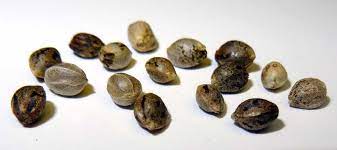Seeds
Nancy’s Own
Elite Auto-Flowering Cannabis Genetics
Hand-Selected Small-Batch Breeds – Pop to Chop in Just 75 Days

Local Genetics from Minnesota
Looking for trusted cannabis seeds in Minnesota? MinnesotaCannabisSeeds.com offers locally curated strains selected for performance, resilience, and terpene expression — perfect for Midwest home grows.
Support small-batch seed breeders and grow with confidence using genetics that are adapted for Minnesota’s unique climate and light cycles.
Visit MinnesotaCannabisSeeds.com
Support Local: MNCannaJoy
Based in Minnesota, MNCannaJoy is a proudly independent shop created by Erin & Bob Walloch to support home growers with locally sourced cannabis seeds and hemp-based wellness products.
What began as a shared passion project became a full-time mission in 2023 — to empower Minnesotans on their cannabis journey with joy, education, and community connection.
Visit MNCannaJoy.comIntroduction to Cannabis Seeds
Learn the Basics: Cannabis Seeds 101
New to growing? Our free course on PLNTRK Learn covers everything you need to know about choosing and starting cannabis seeds — from genetics to germination.
- Understand seed types (feminized, regular, autoflower)
- Learn germination best practices
- Get expert guidance from experienced growers
What Are Cannabis Seeds?
Cannabis seeds are the starting point of every grow. Each seed contains the full genetic blueprint of a cannabis plant — from its structure and cannabinoid content to its flavor, aroma, and resistance to pests or mold. These small but mighty seeds are essential for cultivating new plants, whether you're growing at home or commercially.
Understanding seed types, genetics, and cultivation techniques is key to producing healthy plants and quality harvests.

Why Seeds Matter
The quality and type of seed you choose will directly influence your grow in several key ways:
- Genetics: Determines plant strength, disease resistance, and final cannabinoid profile.
- Yield Potential: Certain strains are bred for high yields and short flower times.
- Growth Pattern: Some strains grow tall and lanky (sativas), while others stay short and bushy (indicas).
- Terpene Profile: Seeds carry aromatic traits that affect flavor, aroma, and even effects.
Types of Cannabis Seeds
- Regular Seeds: These seeds can grow into either male or female plants. They're ideal for experienced growers and breeders looking to develop new strains or preserve genetic lines. Male plants are typically removed if growing for flower.
- Feminized Seeds: Bred to produce only female plants — the ones that grow cannabinoid-rich buds. These are perfect for most home growers who want a predictable harvest with no need to identify and remove males.
- Autoflowering Seeds: A beginner-friendly option. These plants automatically begin flowering based on age (usually 3-4 weeks from sprout), not the light cycle. They tend to be smaller, faster, and lower maintenance — great for tight indoor spaces.
Choosing the Right Seeds
Important Factors to Consider
- Strain Type: Indica (calming), Sativa (energizing), or Hybrid. This affects plant shape, flowering time, and the effects of the final product.
- THC/CBD Levels: High-THC strains are potent and psychoactive. High-CBD strains are preferred for medical use and mild effects.
- Environment: Indoor growers may prefer compact, fast-flowering strains. Outdoor growers can explore larger photoperiod strains with higher yield potential.
- Grower Skill Level: Autoflowers are best for beginners. Feminized photoperiod seeds offer more control for experienced growers.
- Flowering Time: Some strains finish in 8 weeks, while others take 12 or more. Autoflowers can finish in 10–11 weeks from seed.
- Flavor & Aroma Profile: Terpene-rich strains can offer citrus, pine, gas, berry, or dessert-like flavors.
How to Germinate Cannabis Seeds
Basic Germination Steps
- Step 1 – Soak: Place seeds in a glass of clean, room-temperature water for 12–24 hours to soften the shell and activate the embryo.
- Step 2 – Transfer: Move seeds to a moist paper towel, folded inside a dark container or plastic bag to retain humidity.
- Step 3 – Wait: In 1–5 days, a white taproot should emerge. Once it reaches ~½ inch, plant the seed root-down into soil or a starter plug.
- Conditions: Maintain 70–80°F (21–27°C), dark space, and 80% humidity. Do not touch the taproot!
Troubleshooting Seed Starts
- Seed Won’t Crack: Make sure temps are warm enough, and the seed is fresh. Old or improperly stored seeds may not germinate.
- Damping Off: A fungal issue that kills seedlings at the base. Avoid overwatering and ensure airflow in your starter tray.
- Incorrect Depth: Plant seeds ½ inch deep. Too shallow and they dry out; too deep and they may not emerge.
- Male Plants: If using regular seeds, watch for early pre-flower signs to remove males before pollination begins (around week 4–6).
Pro Tip: Start with Genetics You Trust
Always buy your seeds from reputable breeders or shops with clear genetic lineages and reviews. High-quality seeds lead to healthy, vigorous plants and predictable harvests — especially if you're investing time, space, and nutrients into your grow.